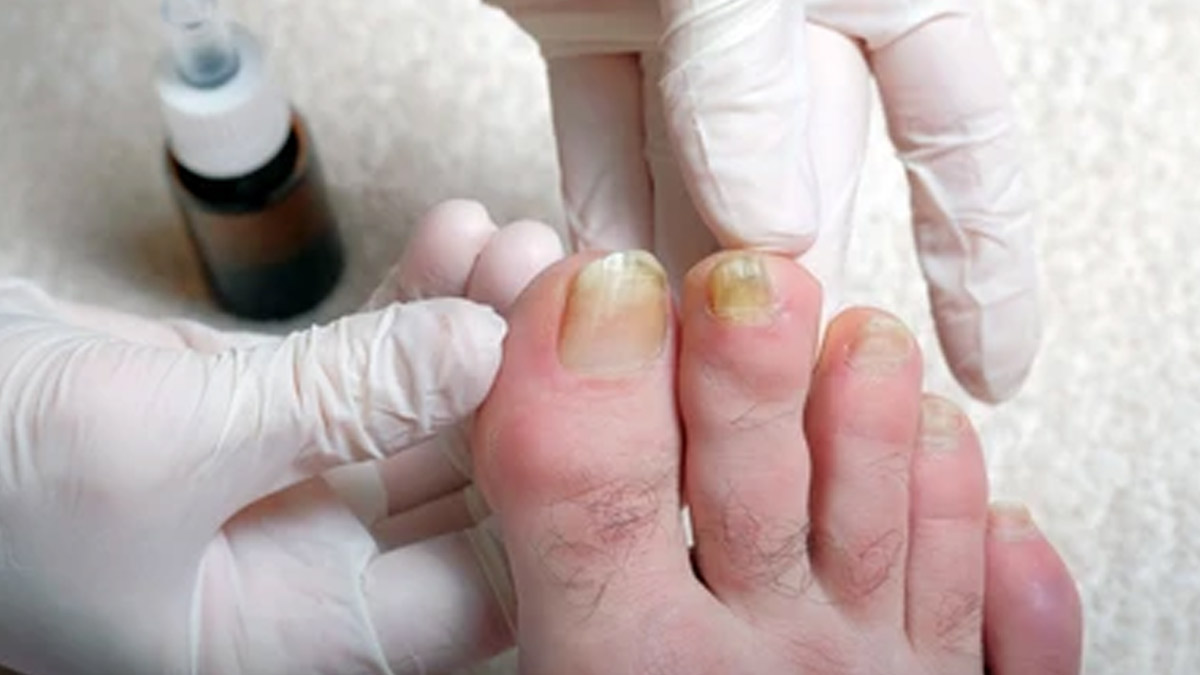
You’re more likely to notice a change in your fingernails than your toenails. This is because your hands and fingers are more visible to your eyes than your feet. However, it may be a good idea to shift your focus to your toes more often, as your toenail colour may indicate certain health problems. Speaking with the OnlyMyHealth team, Dr Ather Pasha, Consultant-Internal Medicine, CARE Hospitals, Banjara Hills, Hyderabad, says that toenail discolouration can be caused by various factors, and the characteristics of the discolouration can provide clues about the underlying issues. We list some of the causes in detail below:
Table of Content:-
Also Read: From Balanced Diet To Trimming: Follow These Tips To Strengthen Your Nails Naturally
Fungal Infections (Onychomycosis)

According to the US Centers for Disease Control and Prevention (CDC), fungal nail infections may affect up to 14% of the general population. Dr Pasha characterises it as a yellow or brown discolouration, that thickens on the nail and has a brittle or crumbly texture.
He shares, "Fungal infections can spread and lead to more severe issues if left untreated. If you suspect a fungal infection, it's advisable to seek medical attention."
Trauma Or Injury
An injury or trauma to your toenails can lead to dark discolouration, often black or purple. This is prevalent under the nail and is also called subungual hematoma. While minor injuries may resolve on their own, severe trauma or repeated injuries may cause long-term damage, says Dr Pasha, advising medical attention for significant injuries.
Psoriasis
Psoriasis is a skin condition that leads to itchy rashes and scaly patches, especially on the knees, elbows, trunk, and scalp. However, it can also affect your toenails, also called nail psoriasis.
According to the American Academy of Dermatology (AAD), most people develop nail psoriasis years after psoriasis begins. It can lead to yellow-brown spots on the nails, pitting or small dents or depressions, and thickening, says Dr Pasha.
Bacterial Infections
A bacterial infection in the toenails can cause greenish-black discolouration, often accompanied by a foul odour. It requires prompt treatment, or else it can lead to complications.
Yellow Nail Syndrome
Yellow nail syndrome is a rare condition that affects the nails, lungs, and legs. According to StatPearls Publishing, people with this condition typically have three main symptoms: discoloured, thick, and slow-growing nails; swelling in the legs due to fluid buildup; and respiratory problems.
Also Read: Wishing To Have Nail Longs? Try These 7 Ways To Fasten Your Nail Growth
Systemic Diseases

Changes in nail colour may be associated with systemic conditions like diabetes or liver disease, says Dr Pasha.
A study published in the journal Clinical Medicine suggests that changes affecting all your fingers and toes are more likely a sign of a general health condition, medication side effects, or genetics.
Abnormal nail clubbing often points to lung problems. Frequent nail infections might indicate a weakened immune system. Connective tissue diseases and vasculitis, or inflammation of blood vessels, can also show through in nail abnormalities.
If toenail discolouration is accompanied by other symptoms or if you have an underlying health condition, Dr Pasha recommends consulting a healthcare provider for a comprehensive evaluation.
How To Treat The Condition?

Some of the treatments for toenail discolouration include:
- Antifungal medications (oral or topical) for fungal nail infection
- In cases of trauma or injury, allow the nail to grow out and seek medical attention for severe injuries
- Psoriasis can be managed with topical medications, oral medications, or light therapy
- Antibiotics may be prescribed for bacterial infections
- Addressing systemic diseases may help improve nail health
Conclusion
If you notice any changes in your toenails, understanding and addressing the underlying causes can help determine the course of treatment. The discolouration, whether it manifests as yellowing, blackening, or other alterations, may be a result of fungal infections, trauma, systemic diseases, or lifestyle choices. Early detection and intervention can play a crucial role in preventing further complications. Also, maintaining good foot hygiene, wearing proper footwear, and adopting a healthy lifestyle can help reduce the risk of toenail discolouration.
Also watch this video
How we keep this article up to date:
We work with experts and keep a close eye on the latest in health and wellness. Whenever there is a new research or helpful information, we update our articles with accurate and useful advice.
Current Version